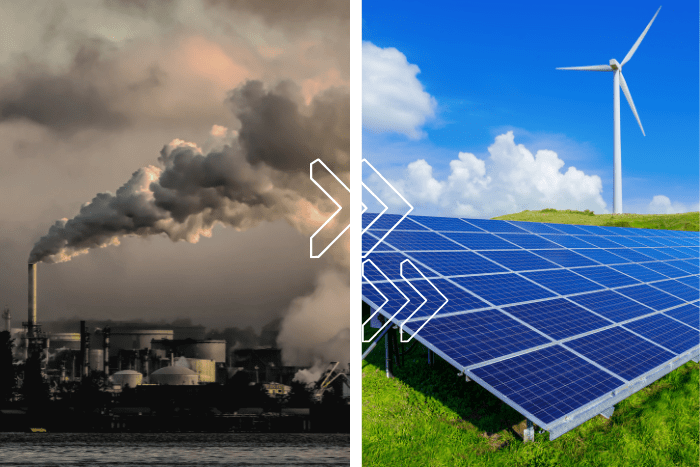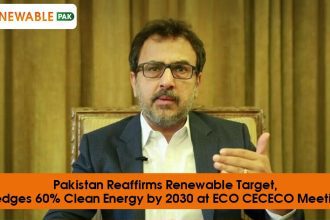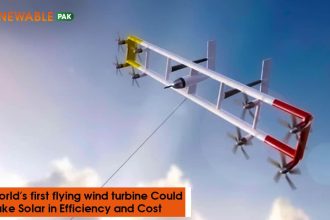Developing countries face particular difficulties as the global drive for clean power picks up speed: inadequate grid infrastructure, rapid demand growth, and low investment. However, one instrument—automation in renewable energy—is becoming a vital enabler. Automation is now necessary for scaling renewable energy and guaranteeing dependability in nations with uneven energy access.
The Significance of Automation in Developing Countries
Installing wind turbines or solar panels is only one aspect of the renewable transition. Real-time adaptable systems are necessary. Automation in renewable energy offers the intelligence required to stabilise and optimise energy systems in developing nations, where frequent outages are frequently caused by inadequate infrastructure.
Automation in renewable energy reduces reliance on fossil fuels as backup sources by increasing the predictability of renewable energy. For areas where every kilowatt of renewable energy matters, this is especially crucial.
Using Smart Systems to Address Intermittency
Intermittency—sunlight and wind are not constant—is a major problem for solar and wind. This gap is filled in part by automation. AI-driven forecasting and intelligent controls are able to predict variations and modify power flows appropriately.
Renewable assets in developing countries run the risk of performing poorly in the absence of automation. Automation in renewable energy guarantees that renewables integrate seamlessly into weak or dispersed grids by enabling predictive adjustments, which lowers blackouts and expensive disruptions.
Grid Resilience and Automation
Developing countries frequently use antiquated grid systems, which leaves them open to faults, surges, and inefficiencies. By building “self-healing” grids that can identify issues and reroute energy before outages happen, automation in renewable energy solves this.
Grid resilience cannot be achieved at scale without automation. Countries can build resilient, future-ready energy systems and overcome traditional infrastructure by integrating smart controls.
Increasing Productivity and Cutting Expenses
Additionally, automation in renewable energy reduces operating costs, which is crucial for countries with limited financial resources. Predictive maintenance prolongs the life of equipment, while automated monitoring lessens the need for manual inspections.
These cost savings increase the appeal of renewable energy projects to investors increases, assisting developing countries in obtaining the funding required to diversify their clean energy sources.

Developing Local Capacity and Skills
The lack of technical knowledge is one of the most urgent issues. To design, implement, and maintain sophisticated systems, automation technologies need highly qualified personnel. The workforce in the energy sector in many developing countries is not well-versed in digital tools. Automation in renewable energy runs the risk of becoming just another imported technology that cannot be fully utilised in the absence of training and knowledge transfer.
For this reason, there is a strong emphasis on collaborations between public and private sectors as well as international organisations. Training initiatives can guarantee that local technicians and engineers acquire the skills required to expand and maintain automated renewable energy systems. Smart energy management courses are already being piloted by universities and vocational schools in nations like Kenya, India, and Vietnam.
In addition to ensuring seamless operations, local capacity building boosts economic independence and generates jobs. Communities can avoid expensive reliance on foreign contractors when they are able to troubleshoot and optimise their own energy systems. Long-term, this promotes innovation suited to regional circumstances, like hybrid microgrids or rural electrification, in addition to maintaining the renewable transition. Investing in people is just as crucial as investing in hardware.
Breaking Through Investment and Policy Barriers
The energy transition cannot be fuelled solely by technology; financial models and policy frameworks must change in tandem with automation. It is then emphasized how uneven laws, red tape, and restricted financial resources impede development in underdeveloped nations. Large-scale deployment may be hindered by unclear policy guidelines regarding renewable tariffs or grid integration, even in cases where automation in renewable energy technologies are readily available.
In certain regions of Africa, for instance, developers are uncertain if utilities will adequately compensate solar households that supply electricity to the grid. Automation-driven solutions, such as demand-response systems or peer-to-peer trading, cannot thrive in the absence of clear regulations. In order to ensure that investors and operators have faith in the market, it is stated that governments should place a high priority on regulatory clarity.
High upfront costs for automated systems continue to be a financial barrier. But creative financing can help close the gap. Examples include climate funds, blended public-private models, and concessional loans. Renewables are far less expensive than fossil fuel alternatives once automation in renewable energy is in place because it lowers long-term costs.
Developing countries can speed up adoption at scale by coordinating automation initiatives with robust legislative frameworks and encouraging funding. Even the most cutting-edge technologies run the risk of not realizing their transformative potential in the absence of political will and wise regulation.
Quotations and Professional Opinions
CleanTechnica highlights:
“Automation is needed to forward the renewable energy transition in developing nations.”
This statement highlights an important fact: renewable energy sources cannot provide the scale and dependability needed to revolutionise energy access without digital solutions like automation.
Moving Towards a Future with Smarter Energy
Automation is the key to maximising the potential of renewable energy in developing countries, despite the fact that there are still obstacles to overcome, such as upfront costs and the requirement for technical expertise. These nations can quicken their transition, lessen their reliance on fossil fuels, and create access that is more equitable to electricity by implementing wise solutions now.
Key Takeaway
Automation in renewable energy will also play a significant role in shaping the clean energy future of developing countries, in addition to wind farms and solar panels. Automation provides the intelligence, efficiency, and resilience required to scale sustainable power systems and overcome inadequate infrastructure.
Investing in automation is not just a technological decision for developing countries; it is a calculated step towards a future with affordable, sustainable, and dependable energy.
References:












